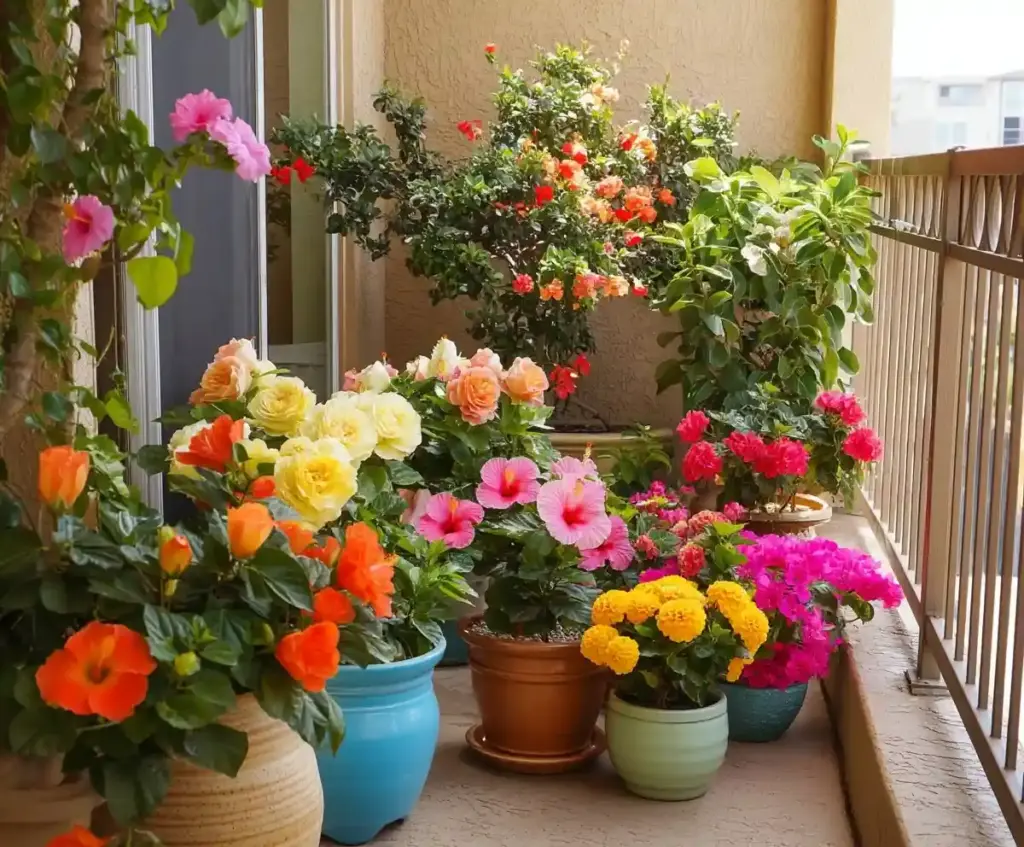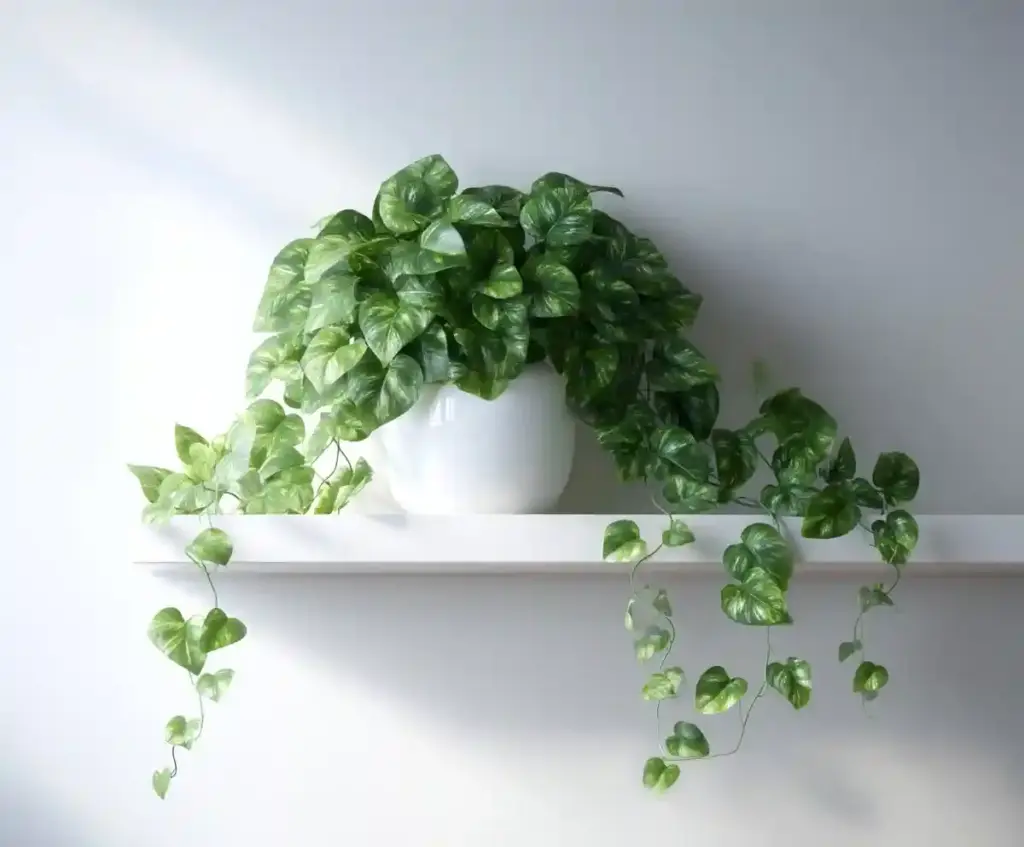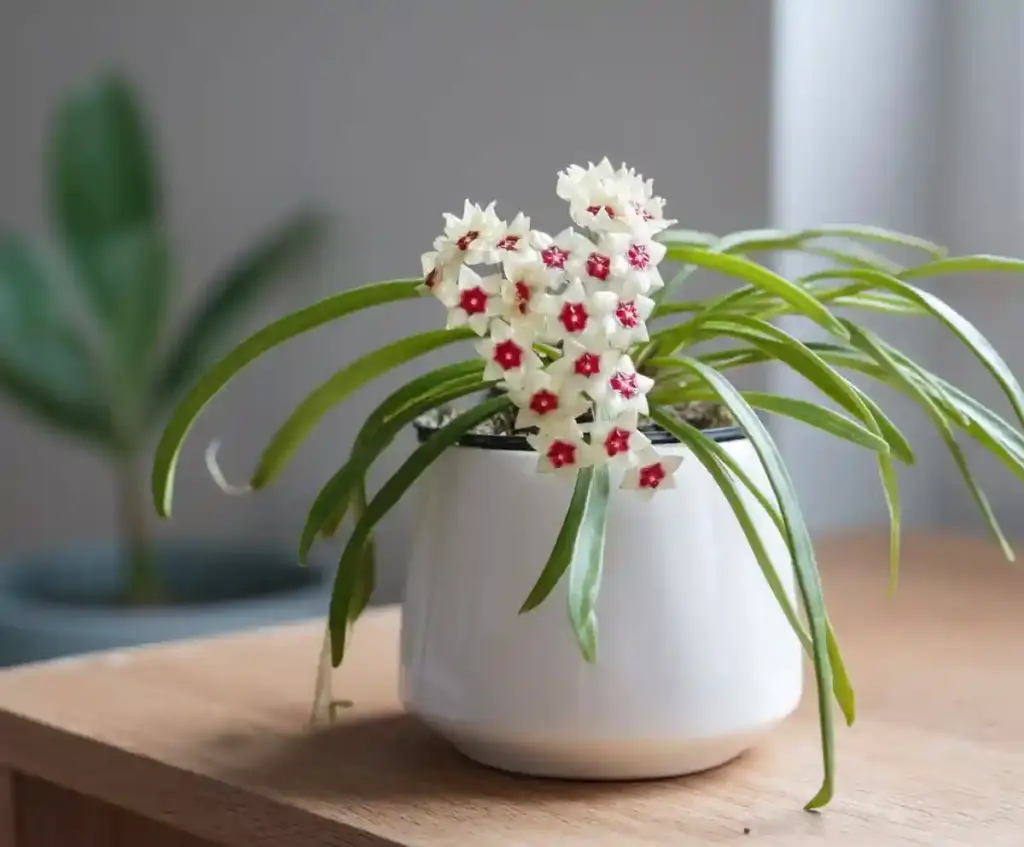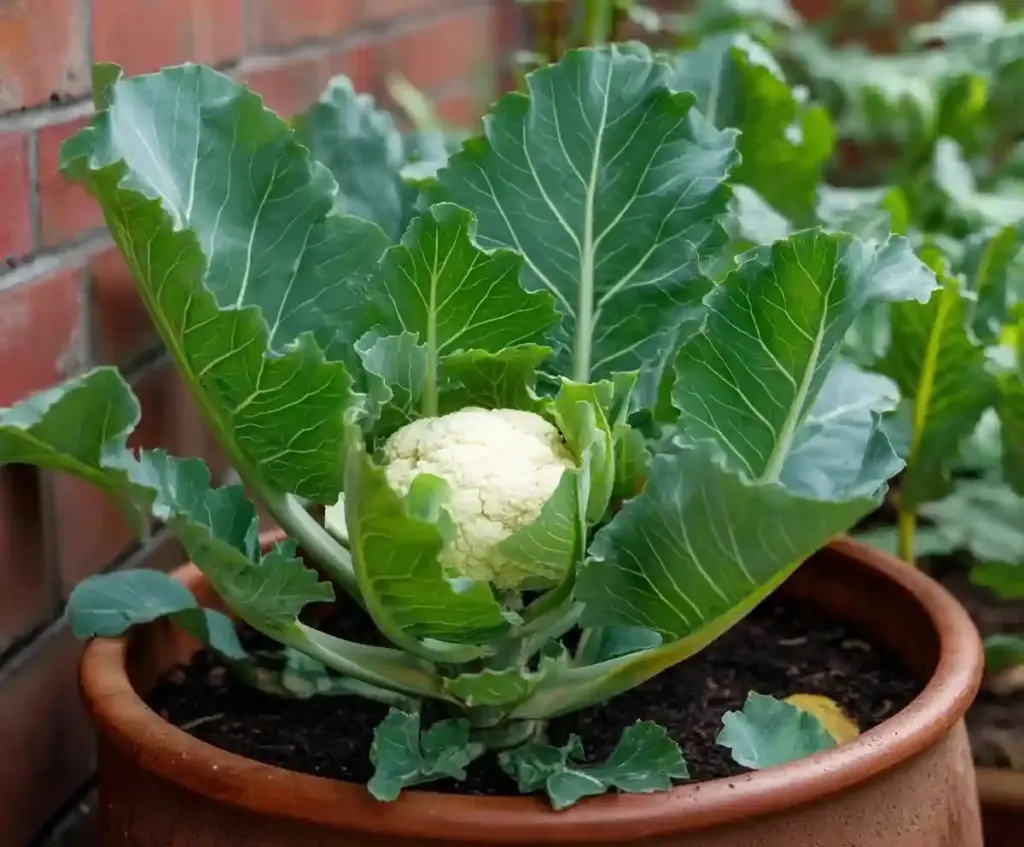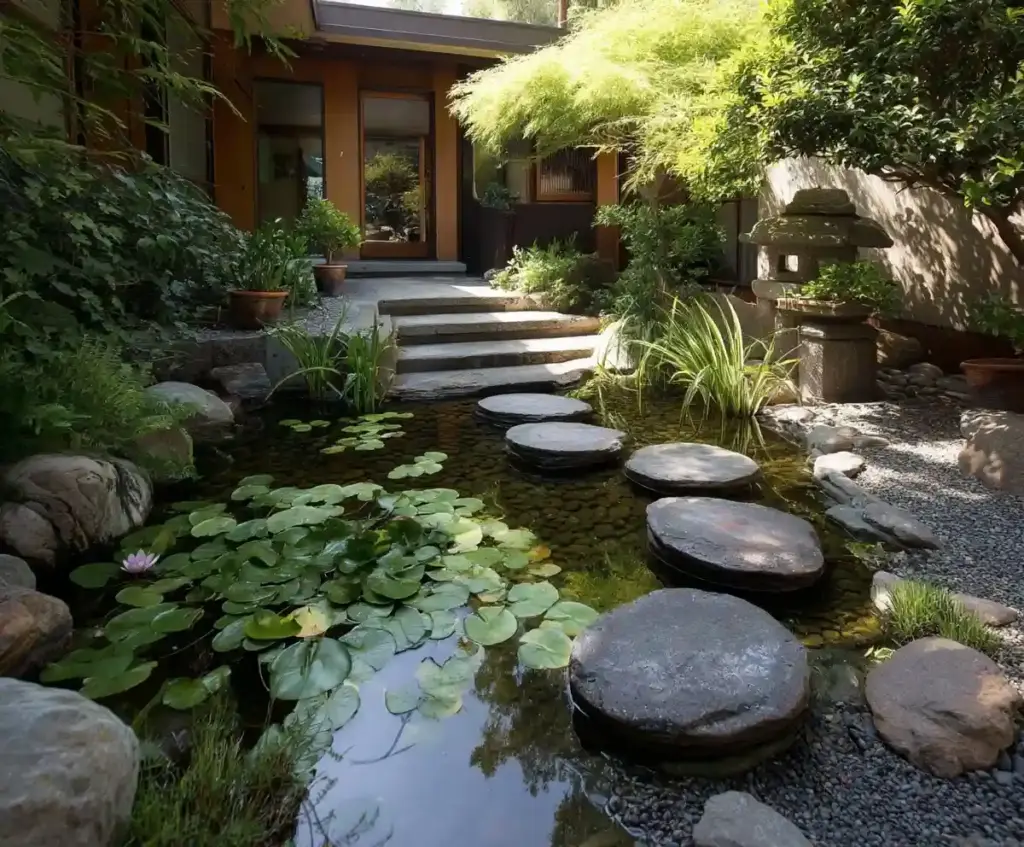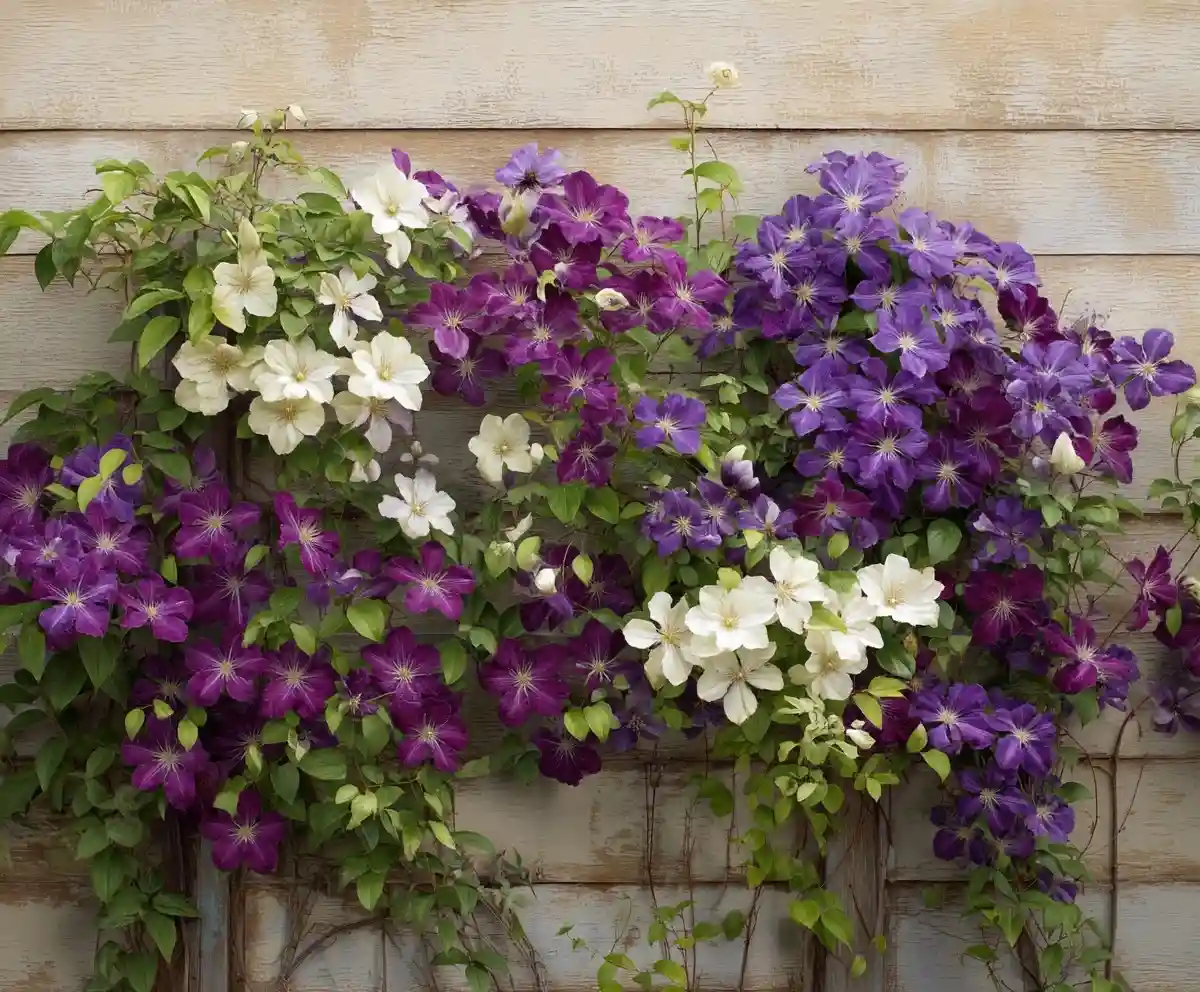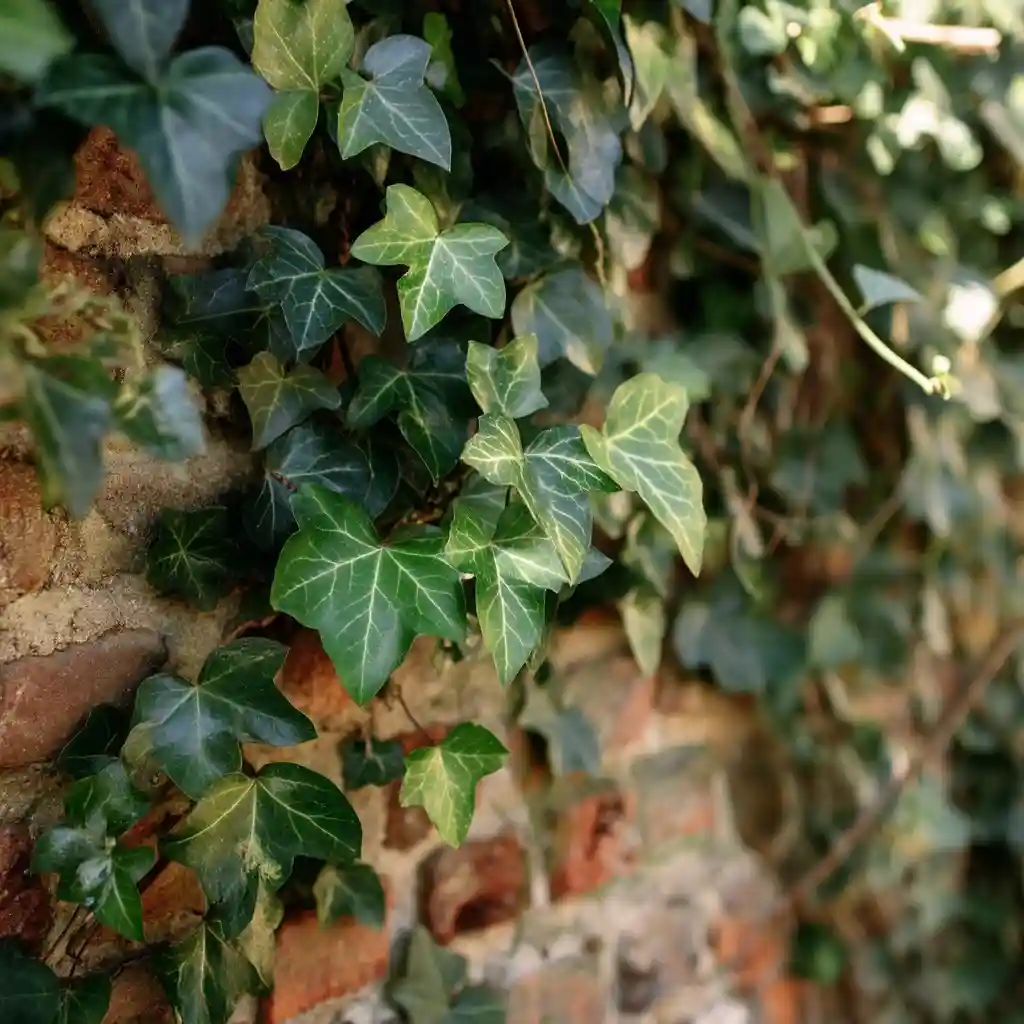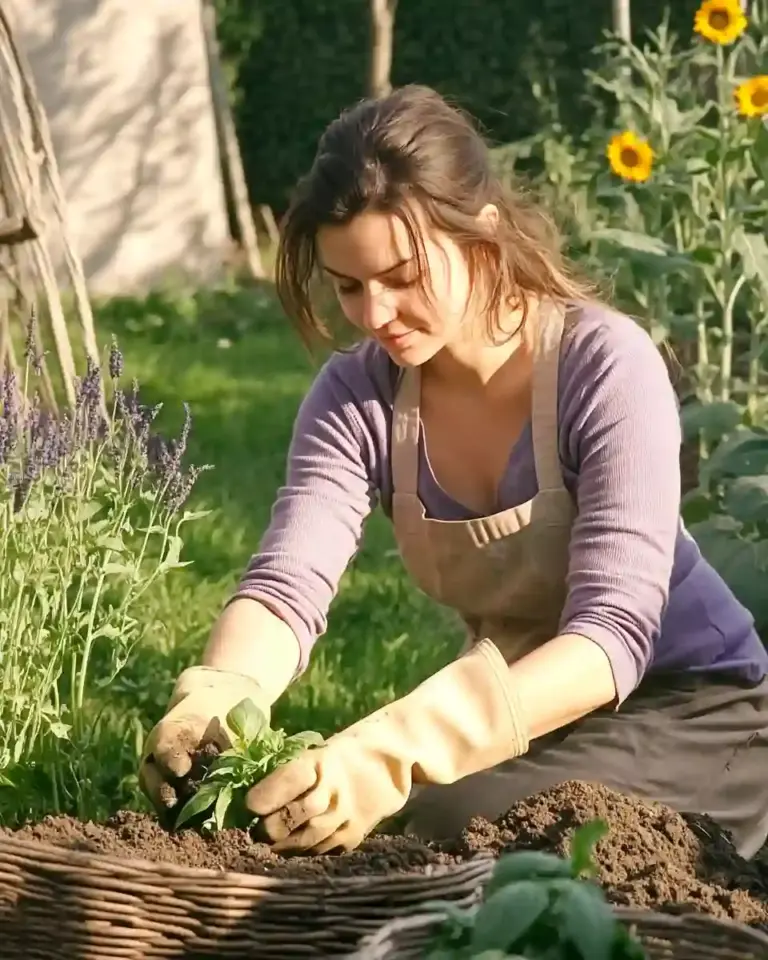Vines to cover a wall are one of the most beautiful and practical additions you can make to your garden or outdoor space. Whether you’re trying to hide an unattractive fence, soften a brick wall, or create a lush green privacy screen, climbing plants offer a natural solution that brings color, texture, and even fragrance to your yard.
The right vine can transform a plain wall into a stunning vertical garden teeming with life. Some vines are evergreen, others bloom with brilliant flowers, and a few even offer edible rewards. But not all vines behave the same—some grow quickly and require frequent pruning, while others are more manageable with minimal upkeep.
In this guide, we’ll go over the 10 best vines to cover a wall, helping you choose the right plant for your needs, climate, and aesthetic. From classic charmers like English ivy to showstoppers like bougainvillea, each option offers something unique.
Table of Contents
1. English Ivy
English ivy is one of the most reliable vines to cover a wall, thanks to its evergreen leaves and fast-growing nature. This classic climber is especially effective on stone, brick, or concrete surfaces, where its aerial rootlets can latch on and spread with ease.
Gardeners love English ivy for its year-round greenery and low-maintenance behavior. It tolerates shade better than most vines, making it ideal for north-facing walls or areas with limited sun exposure.
Why Choose English Ivy?
- Thrives in full shade to partial sun
- Excellent for insulation and sound dampening
- Evergreen coverage year-round
- Minimal care once established
Growing Tips:
- Prune regularly to prevent it from becoming invasive
- Water well during the first season to establish strong roots
- Avoid planting near wooden siding or gutters, as the clinging roots can cause damage
If you’re looking for a lush, classic look with minimal fuss, English ivy is one of the best vines to cover a wall—especially in cooler climates.
2. Climbing Roses

Climbing roses are a romantic and timeless choice when considering vines to cover a wall. With their fragrant blooms and graceful growth habit, these roses can transform even the plainest surfaces into living walls of color and charm.
Unlike bush roses, climbing varieties produce long canes that can be trained along trellises, arbors, or directly on walls using support systems like wires or lattice. They don’t naturally cling like ivy, but they reward a little effort with breathtaking floral displays.
Why Choose Climbing Roses?
- Large, often fragrant blooms in a wide range of colors
- Long blooming season (especially repeat-blooming varieties)
- Great for traditional or cottage-style gardens
- Adds vertical interest and pollinator appeal
Growing Tips:
- Choose a sunny location with at least 6 hours of light daily
- Use strong supports, and tie canes loosely to guide growth
- Feed regularly during the growing season for best flowering
For gardeners who want a blend of beauty and structure, climbing roses are ideal vines to cover a wall and bring a classic elegance to any outdoor space.
3. Wisteria
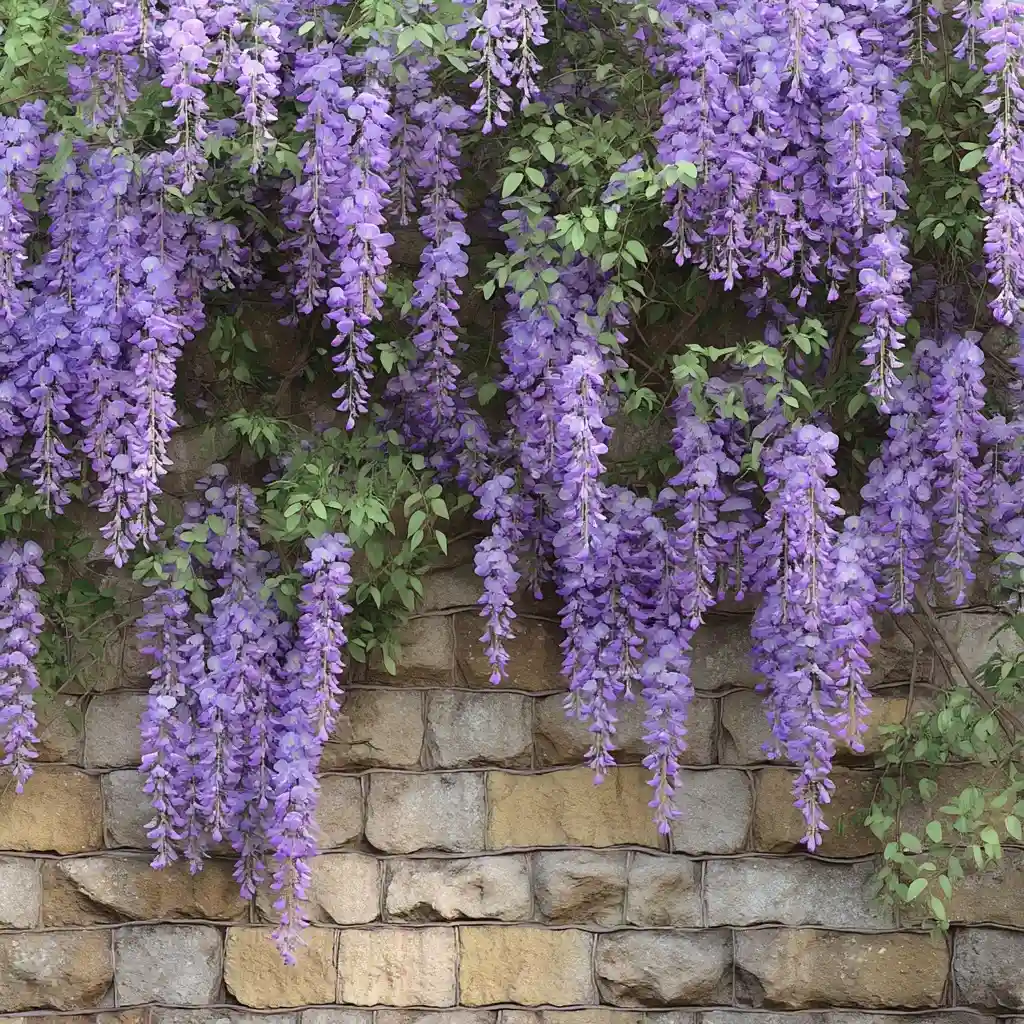
Few plants make a statement quite like wisteria, one of the most dramatic and eye-catching vines to cover a wall. Known for its cascading clusters of lavender, blue, or white flowers, wisteria delivers breathtaking beauty—especially in spring when it bursts into full bloom.
This vigorous grower can cover large walls quickly, so it’s best suited for sturdy structures. While wisteria does require some patience in the early years, the payoff is well worth the wait. Mature vines not only add elegance but also attract bees and butterflies.
Why Choose Wisteria?
- Stunning floral display in spring and early summer
- Fast-growing and long-lived
- Ideal for pergolas, large walls, and heavy-duty trellises
- Adds a whimsical, almost magical touch to landscapes
Growing Tips:
- Needs full sun for maximum flowering
- Prune twice a year to control size and shape
- Install a strong support system—wisteria becomes heavy with age
If you have the space and a little time to invest, wisteria can become the centerpiece of your garden while being one of the most memorable vines to cover a wall.
4. Clematis
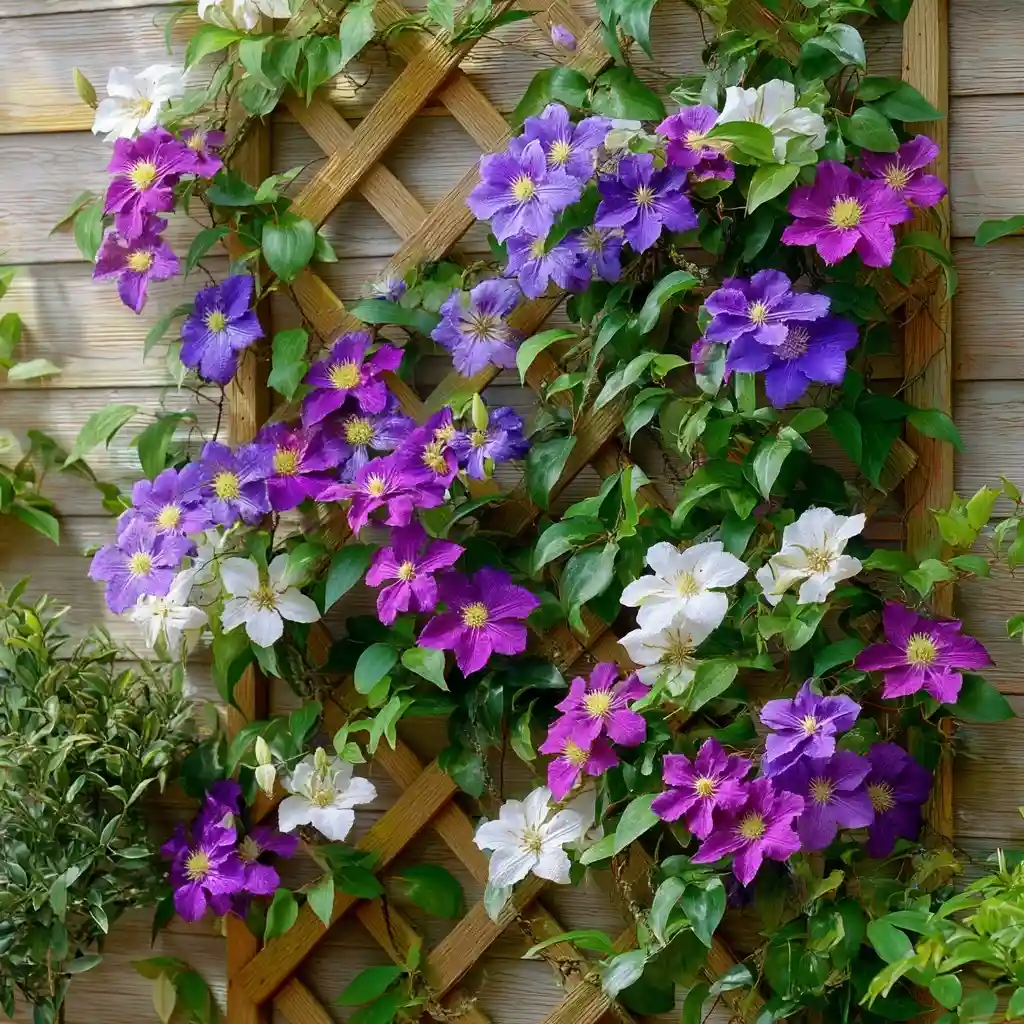
Clematis is one of the most versatile and vibrant vines to cover a wall, offering an incredible variety of colors, bloom shapes, and flowering times. From large, showy blooms to delicate bell-shaped petals, there’s a clematis for nearly every style and setting.
Unlike aggressive growers like wisteria, clematis has a more refined climbing habit. It uses tendrils to gently twine around supports, making it perfect for trellises, mesh fencing, or wire-strung walls. Some varieties bloom once in spring, while others bloom again in late summer or fall—giving you a season-long display.
Why Choose Clematis?
- Available in dozens of colors and forms
- Compact growth ideal for small spaces or containers
- Many repeat-blooming varieties
- Pairs beautifully with other climbers like roses
Growing Tips:
- Plant where the roots are cool and shaded, but the top receives full sun
- Provide a trellis or wire framework for it to cling to
- Prune according to the specific clematis group (I, II, or III)
Whether you’re after soft pastels or bold jewel tones, clematis is a smart and elegant choice when choosing vines to cover a wall—especially when space or support is limited.
5. Grapevines
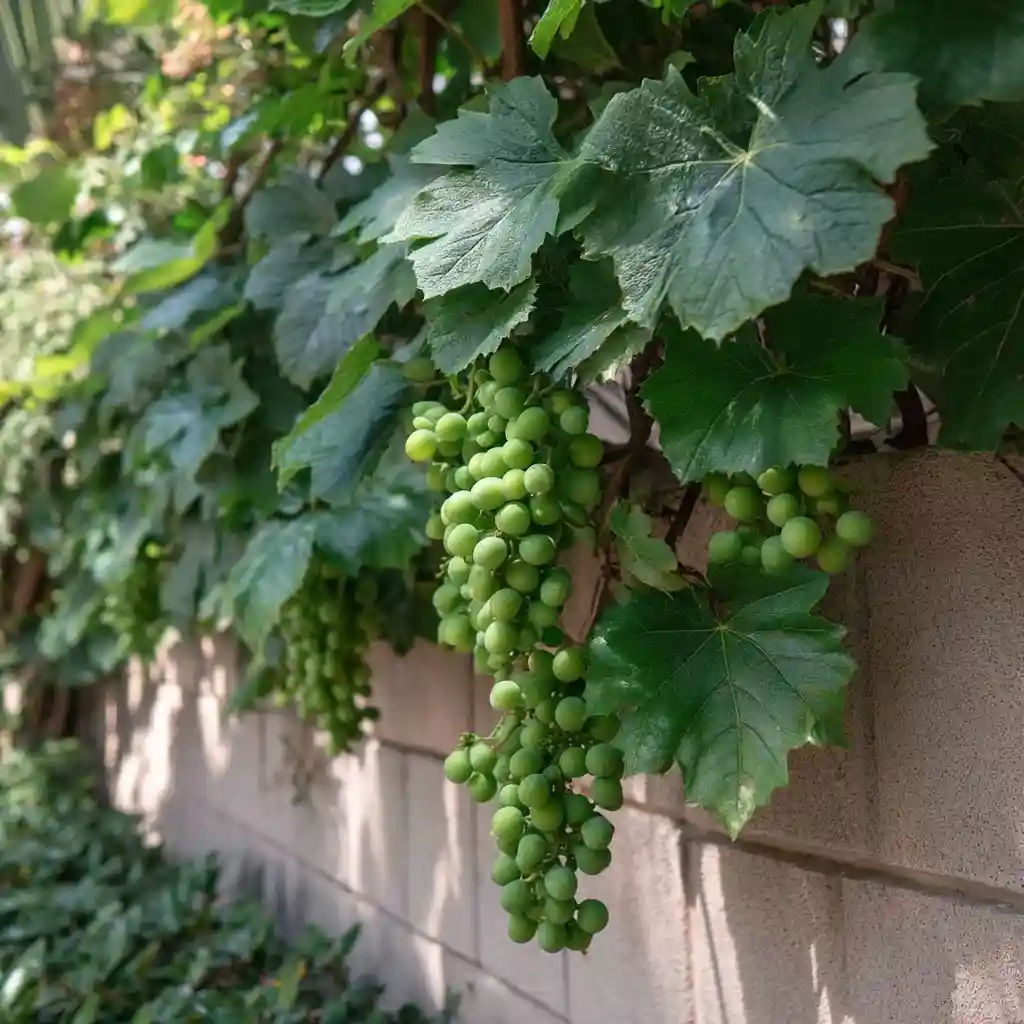
Grapevines are both beautiful and practical vines to cover a wall, offering lush green foliage in spring and summer, followed by delicious fruit in late summer or fall. Their broad leaves and fast-growing tendrils quickly create a dense screen, making them ideal for large vertical surfaces.
In addition to their aesthetic appeal, grapevines bring a touch of vineyard charm to any garden. They’re perfect for sunny walls and can be trained to grow in decorative patterns if supported properly. Plus, with a little care, you can harvest your own fresh grapes right from the vine.
Why Choose Grapevines?
- Provides edible fruit and seasonal interest
- Excellent for hot, sunny walls
- Adds Mediterranean flair to your garden
- Fast-growing and easy to train with support
Growing Tips:
- Requires full sun (at least 6–8 hours daily)
- Prune yearly to encourage fruiting and manage size
- Install a sturdy trellis, arbor, or wire system for best results
Whether you’re growing for fruit or foliage, grapevines are rewarding vines to cover a wall and bring both utility and beauty to your garden.
6. Trumpet Vine
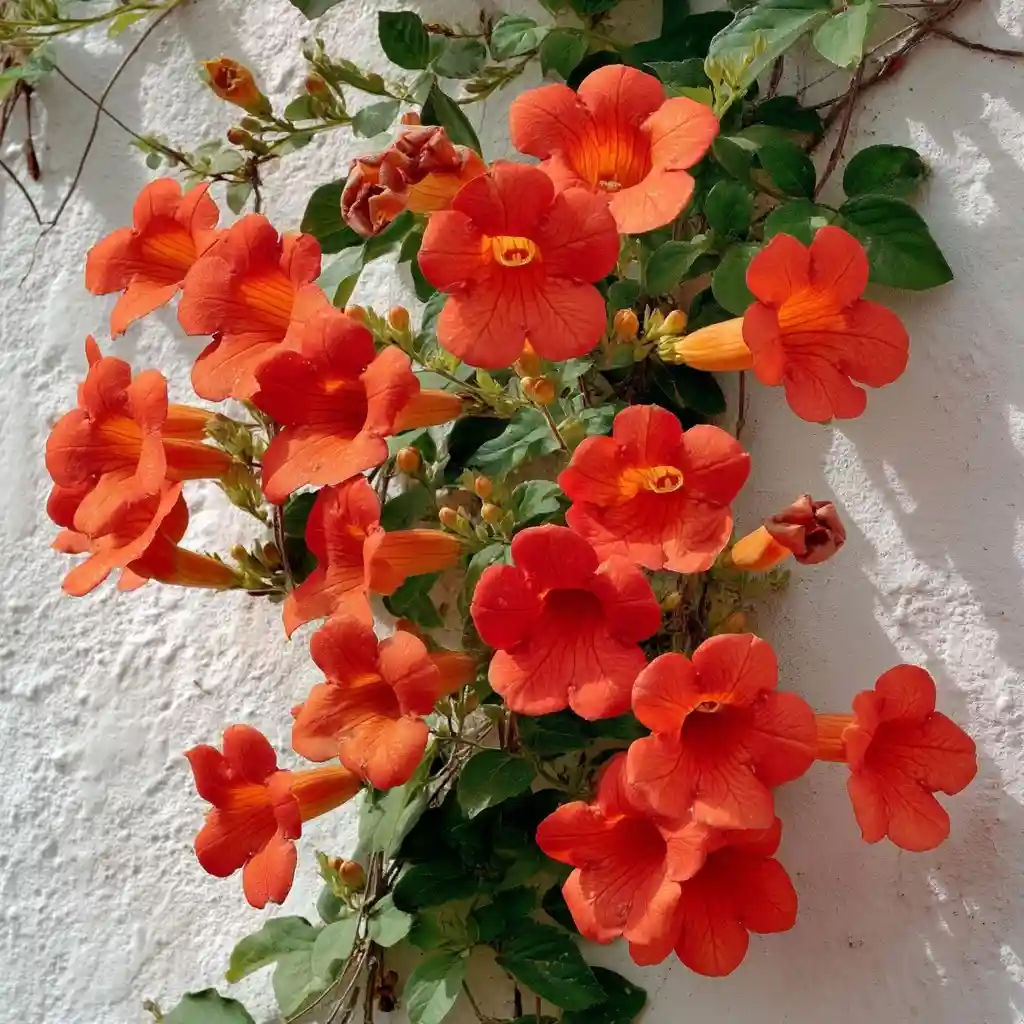
If you’re looking for bold color and a magnet for hummingbirds, trumpet vine is one of the best vines to cover a wall. With its vibrant, trumpet-shaped flowers in shades of orange, red, or yellow, this fast-growing climber brings energy and life to vertical spaces.
Trumpet vine is a vigorous grower that can quickly take over a wall, fence, or arbor if not managed properly. But with regular pruning, it becomes a stunning and manageable centerpiece that blooms from midsummer into fall.
Why Choose Trumpet Vine?
- Attracts hummingbirds and pollinators
- Provides long-lasting blooms in warm colors
- Tolerates poor soil and drought once established
- Covers large areas quickly
Growing Tips:
- Plant in full sun for best flowering
- Requires strong support, as mature vines can be heavy
- Prune hard in late winter to control size and encourage flowering
For gardeners who want vibrant color and lots of activity from pollinators, trumpet vine is a dynamic option when selecting vines to cover a wall.
7. Honeysuckle
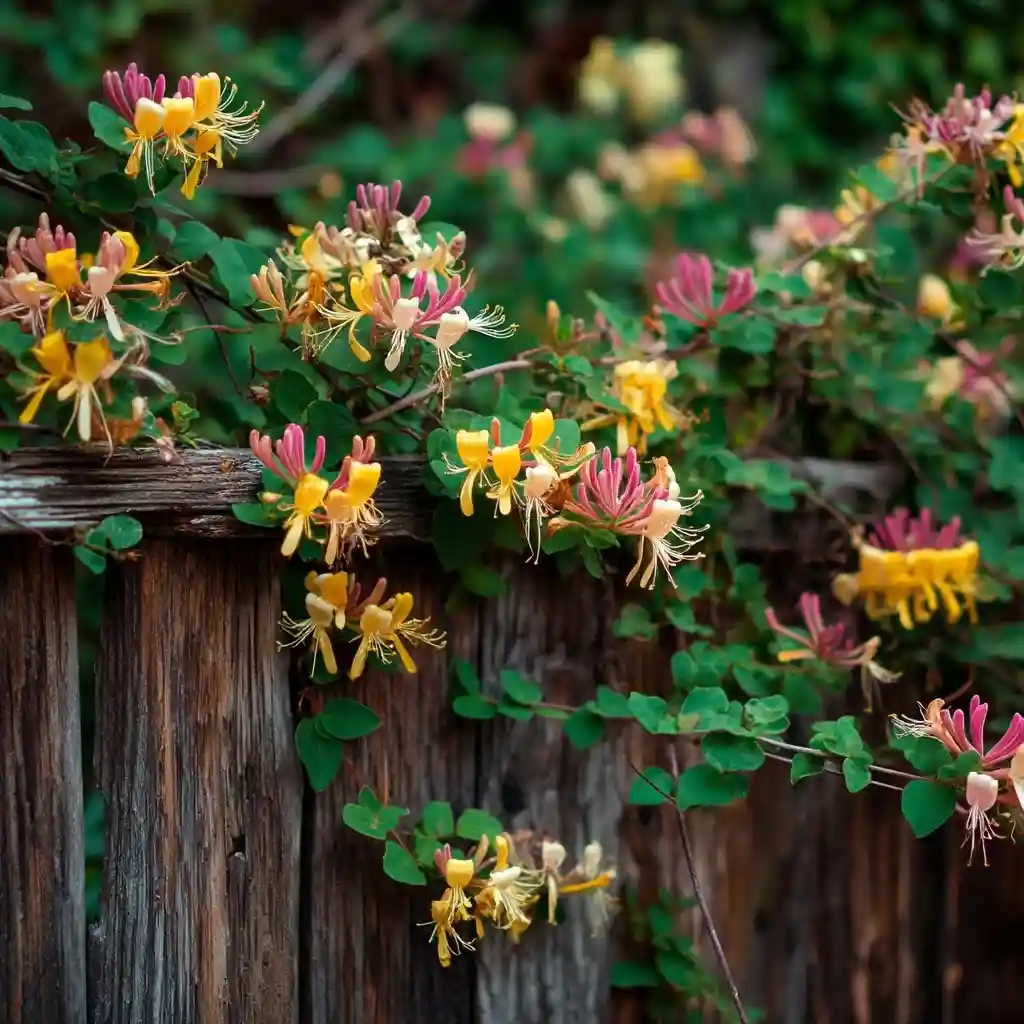
Sweetly scented and fast-growing, honeysuckle is a favorite among gardeners looking for fragrant vines to cover a wall. Its tubular flowers come in shades of yellow, orange, pink, and white, and they’re irresistible to hummingbirds, butterflies, and bees.
Honeysuckle varieties range from wild and sprawling to well-behaved cultivars that are perfect for garden walls and fences. Many are semi-evergreen in mild climates, providing a bit of green even through the cooler months.
Why Choose Honeysuckle?
- Strong, sweet fragrance—especially in the evening
- Blooms from late spring to early fall
- Great for attracting pollinators
- Grows well in most soil types
Growing Tips:
- Prefers full sun but tolerates partial shade
- Provide a trellis or fence for climbing
- Prune after flowering to maintain shape and control spread
If you want a wall that smells as good as it looks, honeysuckle is one of the most rewarding vines to cover a wall—ideal for cozy corners or relaxing seating areas.
8. Bougainvillea

For bold color and tropical vibes, bougainvillea stands out among the top vines to cover a wall. With its vivid bracts in magenta, purple, orange, or white, this sun-loving vine can quickly transform plain surfaces into stunning focal points.
Bougainvillea thrives in warm, dry climates and is especially popular in Mediterranean and desert landscapes. While it looks delicate, it’s actually quite tough—able to withstand heat, drought, and poor soil once established.
Why Choose Bougainvillea?
- Intense, eye-catching color that lasts all season
- Drought-tolerant and low-maintenance in hot climates
- Grows rapidly with proper support and sun
- Can be trained as a vine, shrub, or container plant
Growing Tips:
- Needs full sun—at least 6 hours per day
- Use gloves when handling, as many varieties have thorns
- Water deeply but infrequently to promote blooming
- Prune lightly to shape, but avoid heavy cutting during flowering season
If your garden gets plenty of sun and you’re after brilliant color, bougainvillea is one of the most vibrant and drought-friendly vines to cover a wall.
9. Boston Ivy
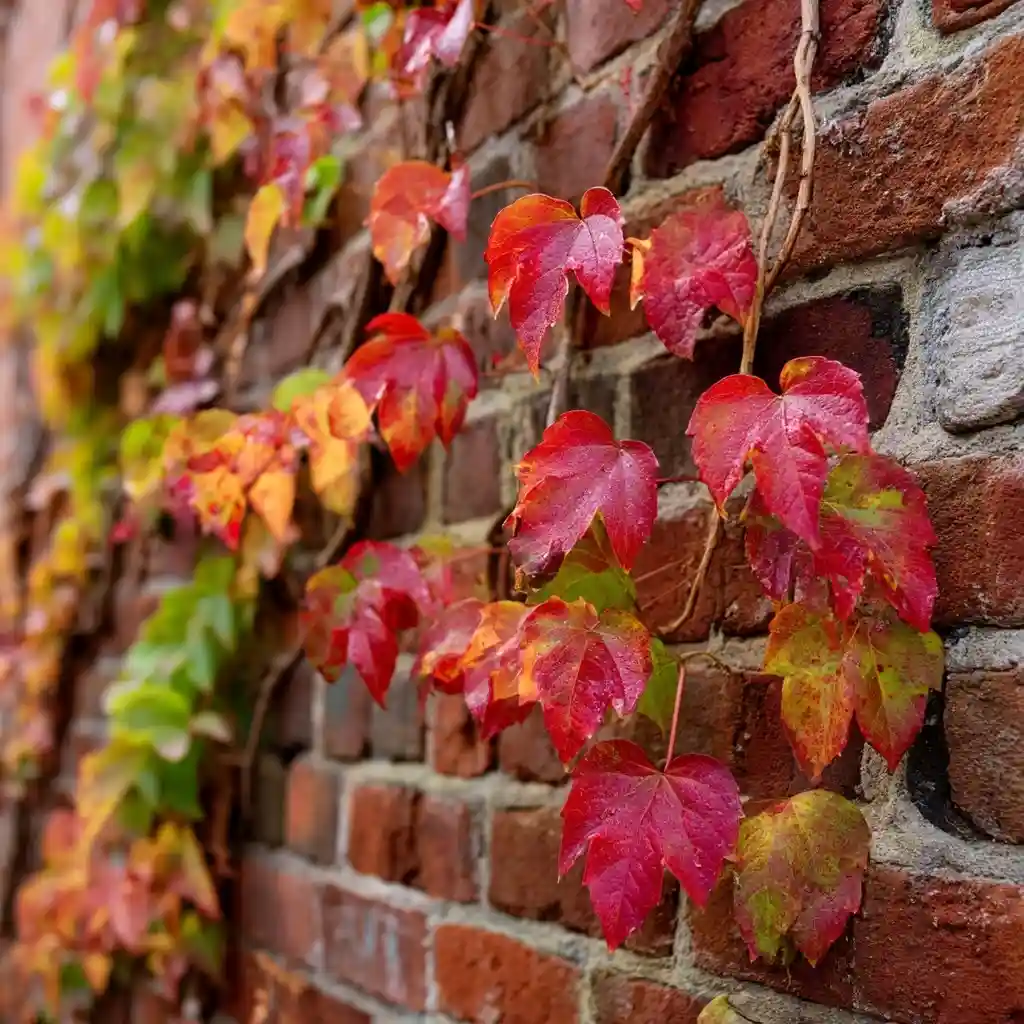
If you’re after a dramatic seasonal display, Boston ivy is one of the most visually striking vines to cover a wall. Known for its dense green foliage in spring and summer, this vine really shines in fall when its leaves turn fiery shades of red, orange, and purple.
Boston ivy attaches itself using small suction-like discs, allowing it to cling directly to walls without needing a trellis or wires. It grows quickly and provides full coverage, making it a great option for large surfaces like brick walls or garages.
Why Choose Boston Ivy?
- Stunning fall color transformation
- Self-clinging and fast-growing
- Offers a uniform, polished look on masonry surfaces
- Helps insulate walls and reduce heat buildup
Growing Tips:
- Prefers full sun to partial shade
- Can be invasive—prune annually to keep it in check
- Best suited for masonry or stone surfaces (avoid wood siding)
For homeowners wanting a bold and low-maintenance wall covering with seasonal interest, Boston ivy is a classic and effective solution.
10. Passionflower
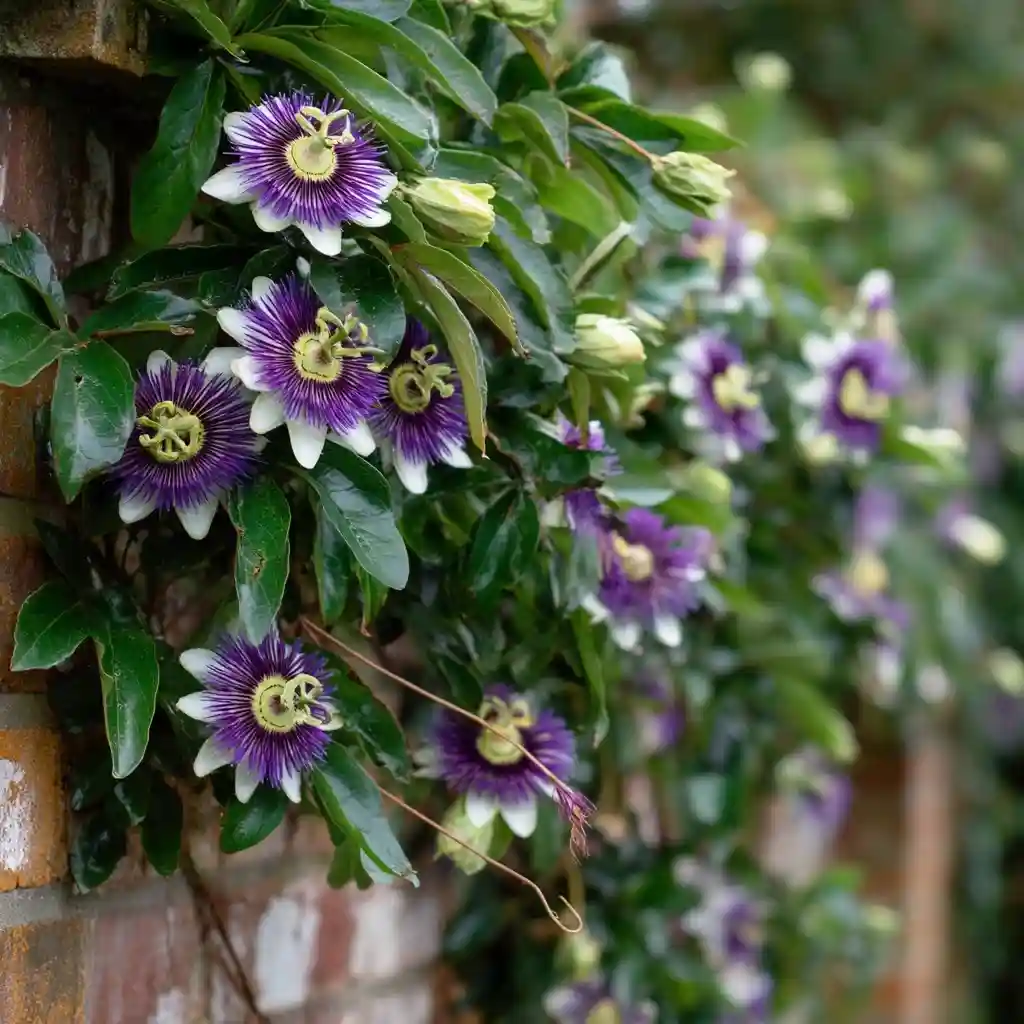
Exotic, intricate, and truly one-of-a-kind, passionflower is a show-stopping choice when selecting vines to cover a wall. Its unique blooms—featuring layered petals, vibrant colors, and striking filaments—make it a conversation starter in any garden.
Passionflower is a fast-growing vine that climbs using tendrils, making it easy to train along fences, arbors, or wire-covered walls. Many varieties also produce edible fruit known as passionfruit, adding another layer of appeal to this already stunning plant.
Why Choose Passionflower?
- Spectacular tropical-style flowers
- Attracts butterflies and other pollinators
- Some varieties produce edible passionfruit
- Fast-growing and great for warm climates
Growing Tips:
- Thrives in full sun to partial shade
- Needs regular watering, especially in dry conditions
- Provide a trellis or wire grid for tendrils to cling to
- Prune after flowering to control growth and maintain shape
For gardeners looking to make a bold statement, passionflower is one of the most eye-catching and rewarding vines to cover a wall—perfect for those who love a tropical flair with a touch of the unusual.
Conclusion
Choosing the right vines to cover a wall can completely transform your outdoor space—from plain and lifeless to lush, colorful, and alive with movement and scent. Whether you’re drawn to the timeless elegance of climbing roses, the edible beauty of grapevines, or the tropical drama of bougainvillea and passionflower, there’s a vine for every wall and every garden style.
As you plan your green wall, consider key factors like sun exposure, wall material, desired maintenance level, and whether you want evergreen cover, seasonal flowers, or edible harvests. With the right choice and a little guidance, your vertical garden can thrive for years to come.
Need more tips?
Consider pairing your vine selection with wall-mounted trellises, drip irrigation systems, or companion plants to complete the look.
FAQ
1. What is the fastest-growing vine to cover a wall?
Trumpet vine, honeysuckle, and grapevines are among the fastest-growing options. These vines can cover large areas quickly, especially with full sun and good soil.
2. Which vine is best for shaded walls?
English ivy is one of the best choices for shaded areas. It thrives in low light and still provides dense, attractive coverage.
3. Are vines bad for walls?
Some vines, like English ivy and Boston ivy, can cling tightly to masonry and may cause damage over time if not managed. Use caution when planting near wooden siding or older structures.
4. What’s the best low-maintenance vine?
Climbing roses (especially disease-resistant varieties) and honeysuckle are relatively low-maintenance once established, requiring only occasional pruning.
5. Can I mix different vines on one wall?
Yes, but be sure to pair vines with similar light, water, and space requirements. For example, clematis and climbing roses make a great pair—roses provide structure while clematis adds color.
🌿 Love gardening inspiration? Follow me on Pinterest for bold plant ideas, tips, and seasonal color!
More Posts
